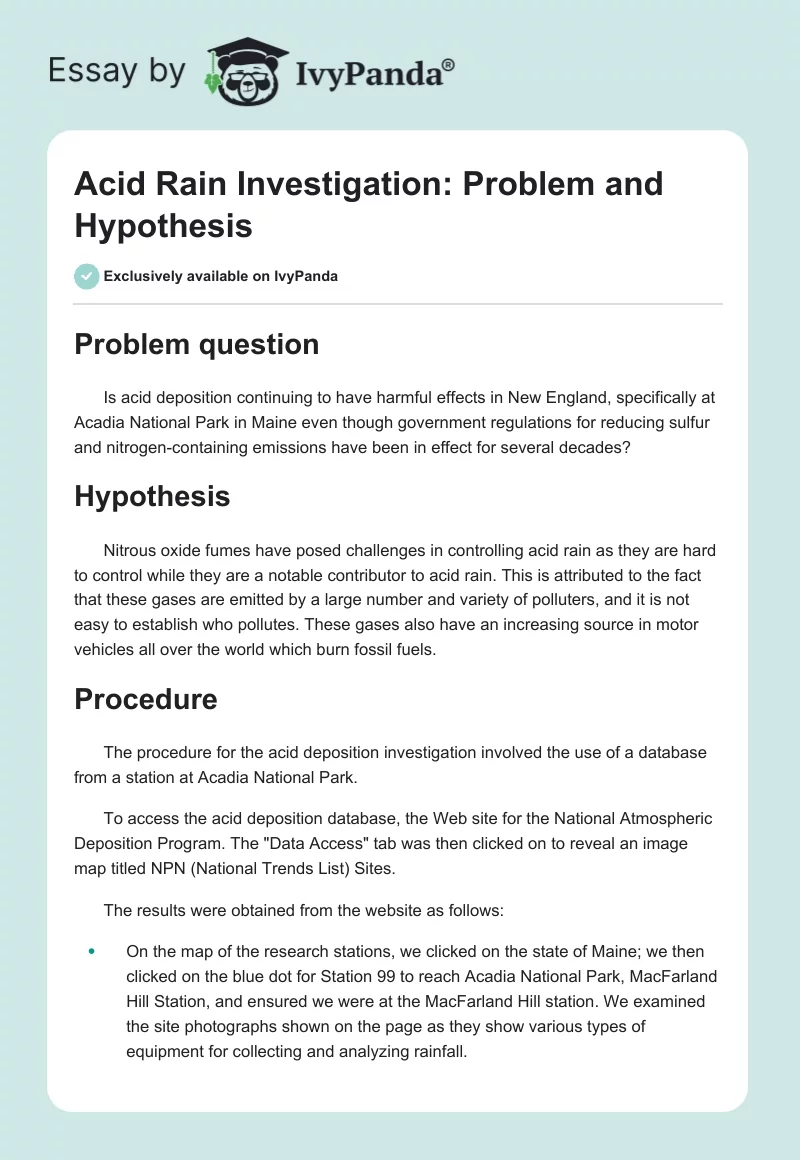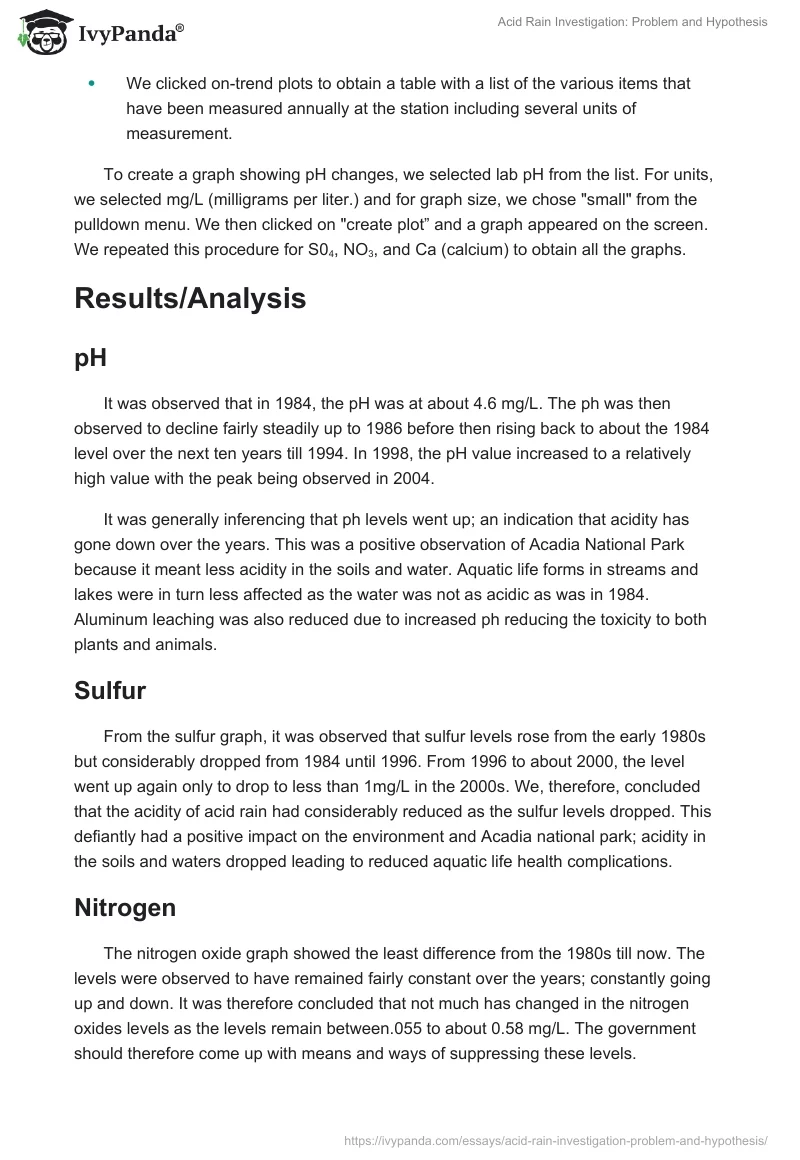Problem question
Is acid deposition continuing to have harmful effects in New England, specifically at Acadia National Park in Maine even though government regulations for reducing sulfur and nitrogen-containing emissions have been in effect for several decades?
Hypothesis
Nitrous oxide fumes have posed challenges in controlling acid rain as they are hard to control while they are a notable contributor to acid rain. This is attributed to the fact that these gases are emitted by a large number and variety of polluters, and it is not easy to establish who pollutes. These gases also have an increasing source in motor vehicles all over the world which burn fossil fuels.
Procedure
The procedure for the acid deposition investigation involved the use of a database from a station at Acadia National Park.
To access the acid deposition database, the Web site for the National Atmospheric Deposition Program. The “Data Access” tab was then clicked on to reveal an image map titled NPN (National Trends List) Sites.
The results were obtained from the website as follows:
- On the map of the research stations, we clicked on the state of Maine; we then clicked on the blue dot for Station 99 to reach Acadia National Park, MacFarland Hill Station, and ensured we were at the MacFarland Hill station. We examined the site photographs shown on the page as they show various types of equipment for collecting and analyzing rainfall.
- We clicked on-trend plots to obtain a table with a list of the various items that have been measured annually at the station including several units of measurement.
To create a graph showing pH changes, we selected lab pH from the list. For units, we selected mg/L (milligrams per liter.) and for graph size, we chose “small” from the pulldown menu. We then clicked on “create plot” and a graph appeared on the screen. We repeated this procedure for S04, NO3, and Ca (calcium) to obtain all the graphs.
Results/Analysis
pH
It was observed that in 1984, the pH was at about 4.6 mg/L. The ph was then observed to decline fairly steadily up to 1986 before then rising back to about the 1984 level over the next ten years till 1994. In 1998, the pH value increased to a relatively high value with the peak being observed in 2004.
It was generally inferencing that ph levels went up; an indication that acidity has gone down over the years. This was a positive observation of Acadia National Park because it meant less acidity in the soils and water. Aquatic life forms in streams and lakes were in turn less affected as the water was not as acidic as was in 1984. Aluminum leaching was also reduced due to increased ph reducing the toxicity to both plants and animals.
Sulfur
From the sulfur graph, it was observed that sulfur levels rose from the early 1980s but considerably dropped from 1984 until 1996. From 1996 to about 2000, the level went up again only to drop to less than 1mg/L in the 2000s. We, therefore, concluded that the acidity of acid rain had considerably reduced as the sulfur levels dropped. This defiantly had a positive impact on the environment and Acadia national park; acidity in the soils and waters dropped leading to reduced aquatic life health complications.
Nitrogen
The nitrogen oxide graph showed the least difference from the 1980s till now. The levels were observed to have remained fairly constant over the years; constantly going up and down. It was therefore concluded that not much has changed in the nitrogen oxides levels as the levels remain between.055 to about 0.58 mg/L. The government should therefore come up with means and ways of suppressing these levels.
Calcium
Calcium concentration levels were observed to drop sharply between 1984 and 1996. Relative constancy was observed between and 1998 before experiencing another drop to about 0.042 mg/L in 1992. Since 1992, the levels have remained relatively constant. This trend was attributed to the fact that observed calcium concentrations were very low and therefore there was no need for stringent enforcement to keep them low as this had already been achieved.
Discussion/Conclusion
Sulfur dioxide and calcium were observed to drop since 1984. Nitrogen oxides were seen to remain relatively constant while ph increased. All these observations are vital to the regulatory bodies concerning legislation and other regulation. The levels can be used to decide on which elements to have more strict regulation on and in what areas for the benefit of wildlife, forests, and the environment.
As established by the legacy of President Roosevelt, national parks and the general environment should be jealously guarded to ensure that future generations enjoy the beauty and abundance of wildlife and nature. Effort should therefore be put into all areas of environmental and wildlife preservation because indeed acid deposition continues to have harmful effects in New England, specifically at Acadia National Park in Maine although government regulations for reducing sulfur and nitrogen-containing emissions have been in effect for several decades.


